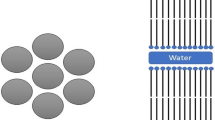Summary
Improvement in manufacturing technology and quality of bread and small baked goods by using emulsifiers results from their classic interfacial and food-specific properties (interaction with flour components). The direct effects of emulsifiers are based on these properties. These direct effects in turn form the basis for further so-called indirect effects. They both have special importance in the dough phase whereas in the baked goods only indirect effects are obvious (antistaling effects).
Zusammenfassung
Die Verbesserungen der Herstellungstechnologie und Qualität von Brot und Kleingebäck durch Emulgatoren ergeben sich aus ihren klassischen grenzflächenaktiven und lebensmittelspezifischen Eigenschaften (Wechselwirkungen mit den Mehlinhaltsstoffen). Auf diesen Eigenschaften beruhen die direkten Emulgatorwirkungen, die Grundlage für weitere sogenannte indirekte Emulgatorwirkungen sind. Beide besitzen in der Teigphase eine besondere Bedeutung, während im fertigen Gebäck nur indirekte Wirkungen auftreten (z. B. Frischhaltung).
Similar content being viewed by others
Literatur
Mac Ritchie F (1980) Protein lipid interaction in baking quality of wheat-flours. Baker's Dig 54:10–13
Seibel W (1972) Die Verwendung von Emulgatoren für die Herstellung von Brot und Feingebäck. Gordian 72:355–364
Langhans RK (1972) Keyholing when using polysorbate 60 as a dough conditioner. Baker's Dig 46:81
Hoseney RC, Hsu KH, Ling RS (1976) Use of diacetyl tartaric esters of monoglycerides in breadmaking. Baker's Dig 50:28–30
Chung OK, Pomeranz Y, Goforth DR (1976) Improved sucrose esters in breadmaking. Cereal Chem 53:615–626
Tsen CC, Hoover WJ (1971) The shortening-sparing effect of sodium stearoyl-2-lactylate in bread baking. Baker's Dig 45:38–42
Friberg S (1976) Food emulsions. Marcel Dekker, New York
Lange H, Kurzendörfer CP (1974) Zum Mechanismus der Stabilisierung von Emulsionen. Fette Seifen Anstrichm 76:120–126
De Stefanis VA, Ponte JG jr, Chung FH (1977) Binding of crumb softeners and dough strengtheners during breadmaking. Cereal Chem 54:13–24
Trumbetas JA, Fioriti JA, Sims RJ (1979) Study of lipid protein interaction using pulsed NMR. J Am Oil Chem Soc 56:890–893
Langhans RK (1971) A baker's guide to the new conditioner-softener. Baker's Dig 45:54–56
Dubois DK, Ash DJ (1971) New dough conditioning/softener systems. Baker's Dig 45:32–34
Short L (1971) The evaluation of additives for breadmaking. II. Lipid-type additives. Food Techno Aus 23:172–175
Mac Donald IA (1968) The functional properties of various surface active agents. Baker's Dig 42:24–29
Mac Ritchie F (1977) Flour lipids and their effects in baking. J Sci Food Agric 28:53–58
Junge RC, Hoseney RC (1981) A mechanism by which shortening and certain surfactants improve loaf volume in bread. Cereal Chem 58:408–412
De Stefanis VA, Ponte JG Jr. (1977) Binding of crumb softeners and dough strengtheners during breadmaking. Cereal Chem 54:13–24
Hess K (1954) Protein, gluten and lipid in wheat grain and flour. Kolloid-Z 136: S 84
Grosskreutz JC (1961) A lipoprotein model of wheat gluten structure. Cereal Chem. 38: S 336
Larsson K (1980) Technical effects in cereal products of lipids, naturally present and additives. In: Cereals for food and beverages: Progress in Cereal Chemistry and Technology. G. E. Inglett und L. Munck (Hrsg) London und New York: Academic Press Inc 1980
Hoseney RC, Finney KF, Pomeranz Y (1970) Functional breadmaking and biochemical properties of wheat flour components. IV. Gliadin-lipid-glutenin interaction of wheat gluten. Cereal Chem 47: S 135
Wehrli HP, Pomeranz Y (1970) Interaction between galactolipids and wheat flour macromolecules. Cereal Chem. 47: S 160
Aidoo ES (1972) High-protein bread: Interactions of wheat proteins and soy proteins with surfactants in doughs and in model systems. Dissertation, Department of Grain Science and Industry. Manhattan, Kansas (USA). Kansas State University. 1972
Krog N (1981) Theoretical aspects of surfactants in relation to their use in breakmaking. Cereal Chem. 58: S 158-S 164
Maes E (1955) Über die backtechnische Wirkung von oberflächenaktiven Wirkstoffen. Brot und Gebäck 9: Nr. 7, S 117-S 119
Jacobsberg FR, Worman SL, Daniels NWR (1976) Lipid binding in wheat flour doughs: The effect of Datem emulsifier. J Sci Food Agric 27: S 1064-S 1070
Birnbaum H (1977) Interactions of surfactants in breadmaking. Baker's Dig 51:17–24
Rotsch A (1953) Über die Bedeutung der Stärke für die Krumenbildung. Brot und Gebäck 7:121–125
Rotsch A (1954) Chemische und technische Untersuchungen an künstlichen Teigen. Brot und Gebäck 8:129–130
Van Lonkhuysen H, Blankenstijn J (1974) Interaction of monoglycerides with starches. Stärke26:337–342
Dubois DK (1979) Dough strengtheners and crumb softeners. II. Products, types and functions. Res Dept Techn Bull I, Issue
Knightly WH (1968) The role of surfactants in baked goods. In: Surface-active lipids in foods. S.C.I. Monograph No. 32. Soc Chem Ind: London
Lagendijk J, Pennings HJ (1970) Relation between complex formation of starch with monoglycerides and the firmness of bread. Cereal Sci Today 15:354, 355, 365
Knightly WH (1973) The evolution of softeners and conditioners used in baked foods. Baker's Dig 47:64–75
Banecki H (1982) Kleber-der entscheidende Faktor der Brotalterung. Getreide, Mehl Brot 36:272–276
Schoch TJ, French D (1967) Studies on bread staling. I. The role of starch. Cereal Chem 24:231–249
Kim SK, D'Appolonia BL (1977) The role of wheat flour constituents in bread staling. Baker's Dig 51:38–44
Krog N, Nybo-Jensen B (1970) Interactions of monoglycerides in different physical states with amylose and their antifirming effects in bread. Food Technol 5:77–87
Schuster G (1983) Untersuchungen zum Grenzflächenverhalten von Emulgatoren. Seifen, Öle, Fette, Wachse 109:3–9
Pomeranz Y, Seibel W, Brummer JM (1983) Backtechnische Wirkung von Öl und Fett in Gegenwart von Emulgatoren bei hefegelockerten Backwaren. Getreide, Mehl und Brot 37:372–376
Schuster G, Adams W (1984) Emulsifiers as additives in bread and fine baked products. In: Pomeranz, Y (Hrsg) Advances in Cereal Science Vol. VI Am. Assoc. of Cereal Chem. Inc. St. Paul, Minn. USA, pp 139–287
Author information
Authors and Affiliations
Rights and permissions
About this article
Cite this article
Schuster, G. Emulgatoren in Brot und Kleingebäck. Z Lebensm Unters Forch 179, 190–196 (1984). https://doi.org/10.1007/BF01041892
Received:
Issue Date:
DOI: https://doi.org/10.1007/BF01041892




